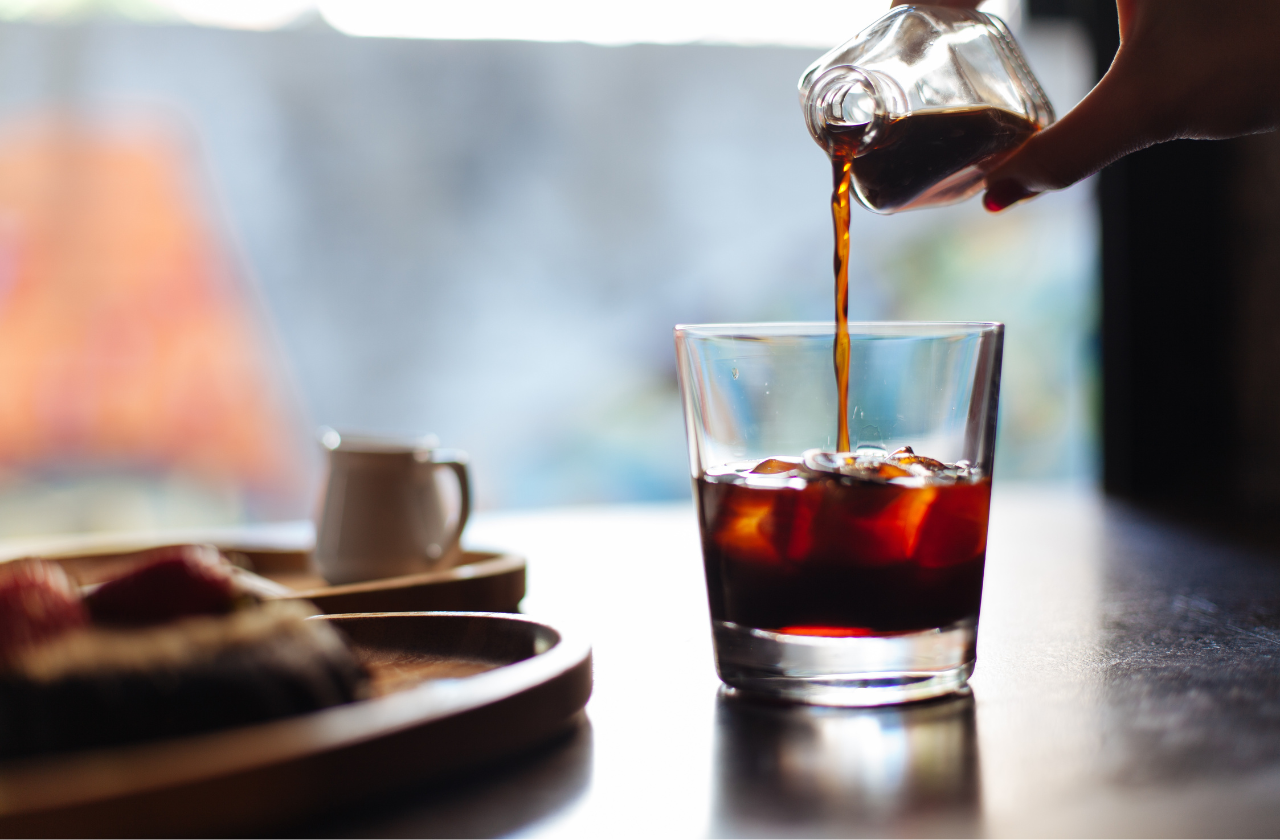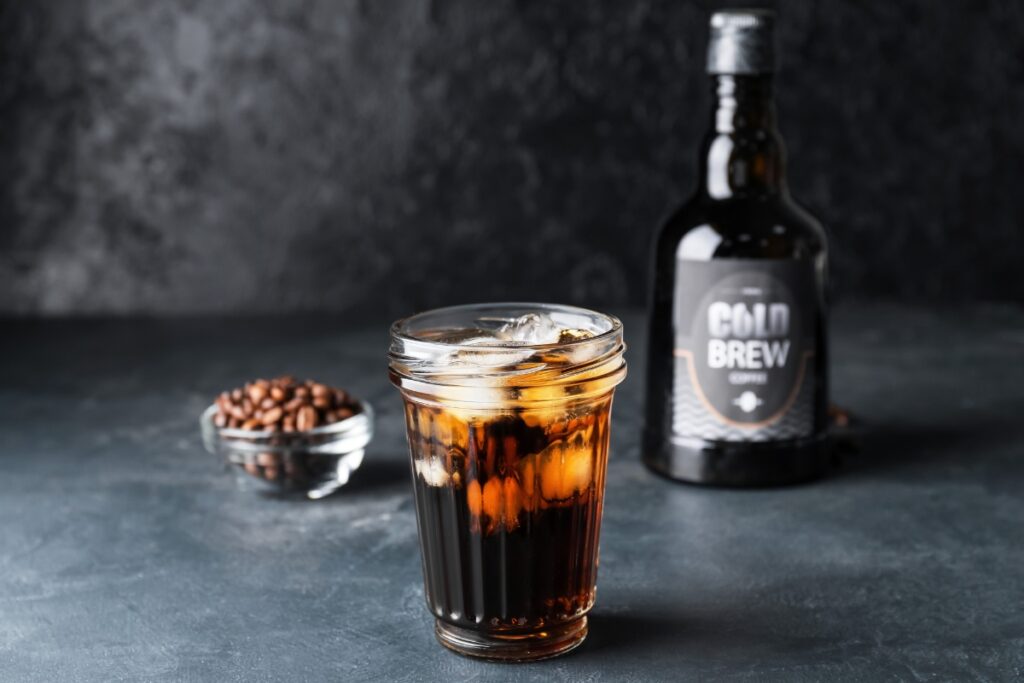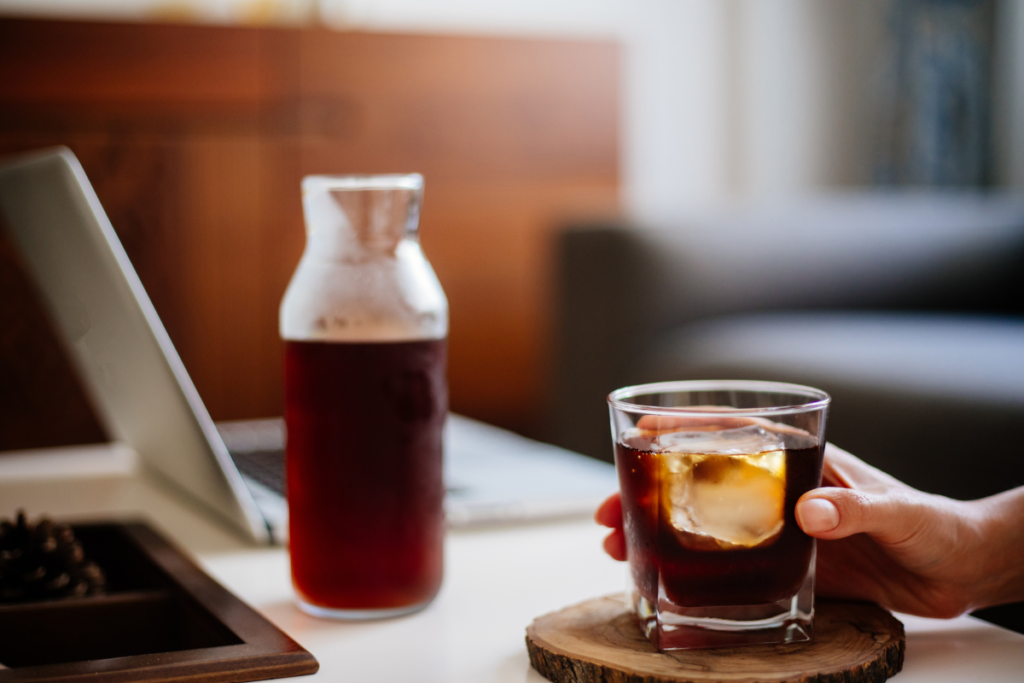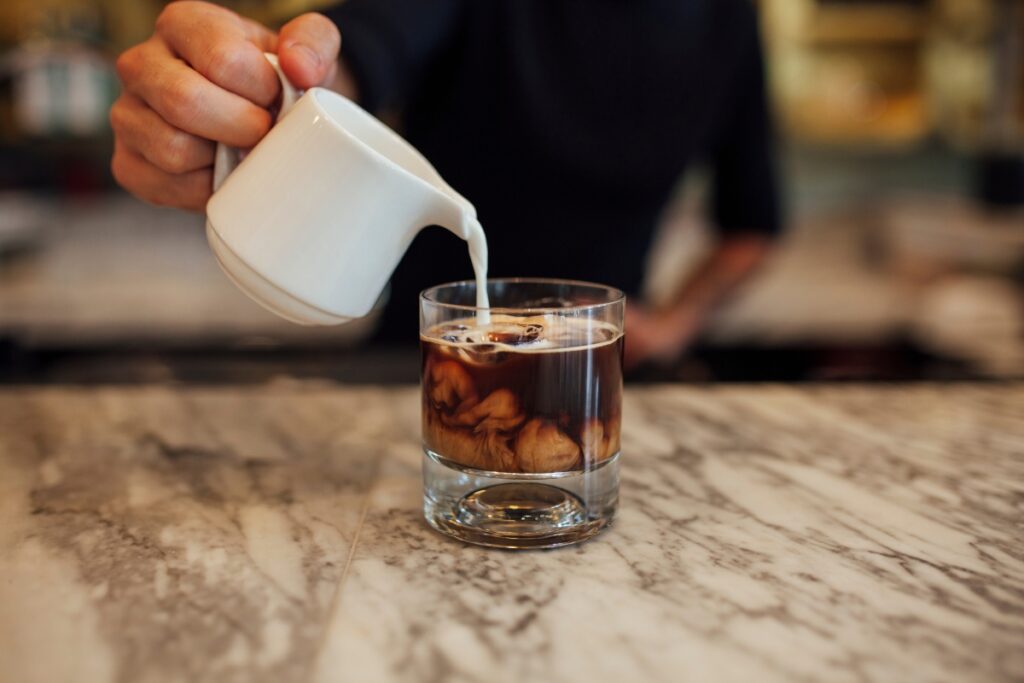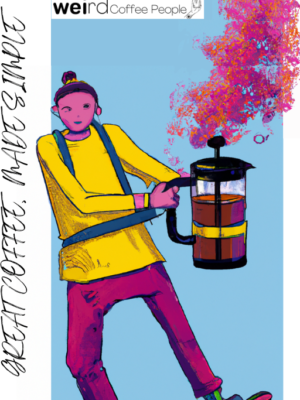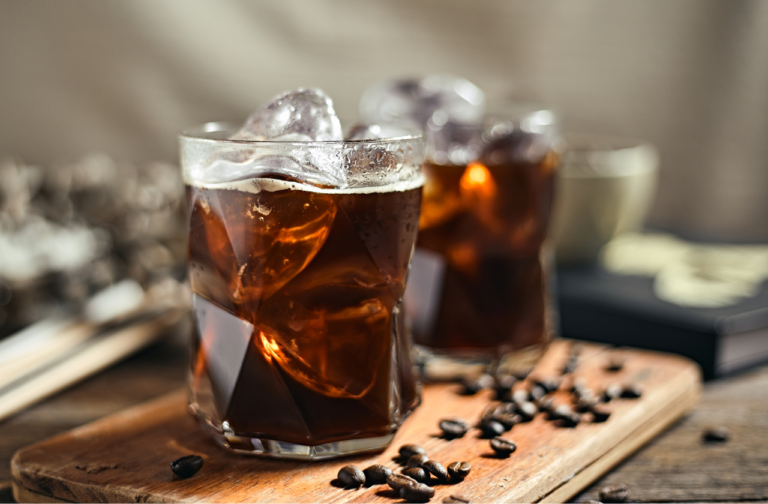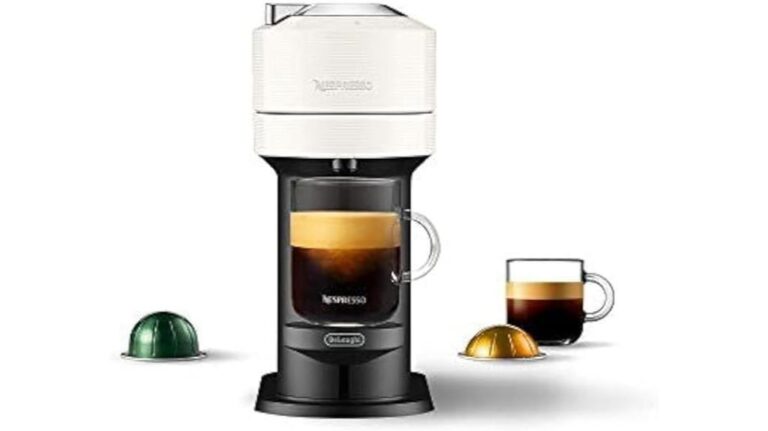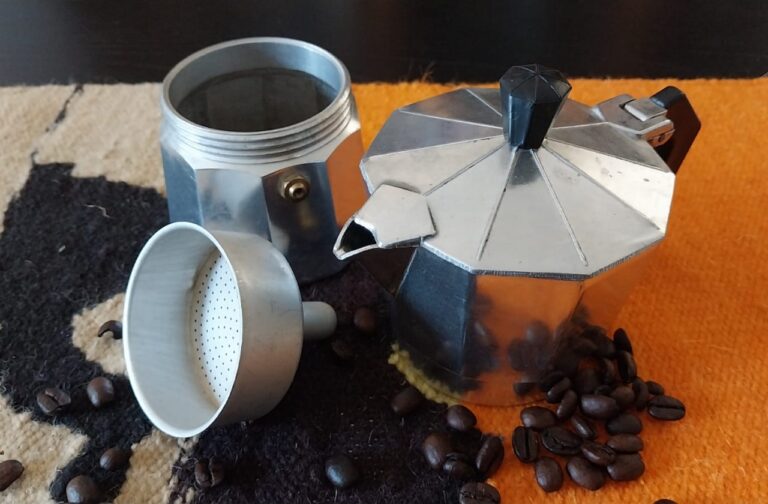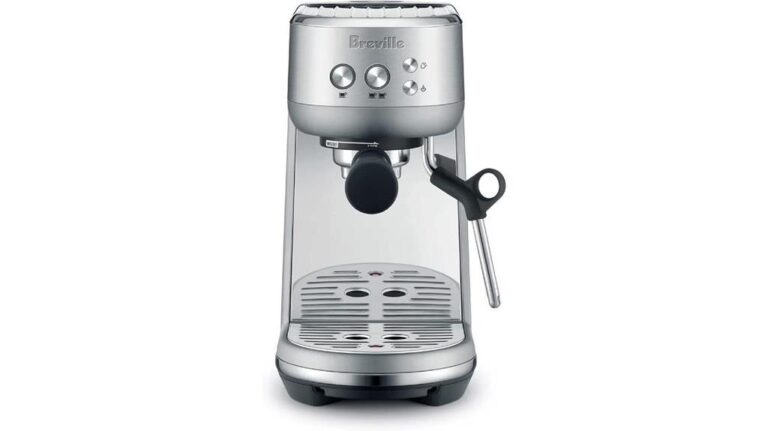Cold Brew Coffee Craze: Mastering the Art of Perfect Home Brew
Cold brew coffee has become a staple for coffee enthusiasts and casual drinkers in recent years. Unlike traditional hot-brewed coffee, cold brew offers a unique experience both in taste and preparation.
Cold brew coffee is smooth and slightly sweet, with a super refreshing taste. This distinct flavor profile results from a unique brewing process where coarse coffee grounds are steeped in cold water for a period of time, typically ranging from 12 to 24 hours.
This method extracts the flavor, color, and caffeine from the beans while leaving behind many of the bitter compounds found in hot brews. The result is a less acidic, smoother coffee that appeals to a range of palates.
Making cold brew coffee at home is easy, requiring no fancy equipment. Homemade cold brew is more affordable compared to frequent purchases at coffee shops, making it a budget-friendly option for daily consumption. In this article, we will guide you through the art of perfecting your home-brewed cold-brew coffee.
The Basics of Cold Brew Coffee
The essence of cold brew coffee lies in its distinct brewing method, which differs significantly from traditional hot brewing techniques. Understanding these basics sets the foundation for making cold brew at home. Here’s what you need to know about the cold brew process:
The Cold Brewing Method
To make a cold brew, coarse coffee grounds are immersed in cold water and left to steep for an extended period, usually between 12 to 24 hours. This slow infusion process is crucial as it allows the coffee to slowly absorb the water, extracting the color, flavor, and caffeine from the grounds.
Unlike hot brewing methods, where water passes through the grounds quickly, cold brewing gives time for a more gentle extraction, resulting in unique flavor characteristics.
Watch this video on how to make a cold-brewed espresso shot:
Flavor Profile
One of the most notable features of cold brew coffee is its flavor profile. Due to the cold water extraction, fewer bitter compounds are released compared to hot brewing methods. This results in a coffee that is less acidic, smoother, and slightly sweeter. For many, this makes cold brew more enjoyable and easier on the stomach, especially for those who find regular drip coffee or espresso too harsh.
Versatility
Cold brew coffee is incredibly versatile. It can be served cold over ice, diluted with milk or water to achieve the desired strength, or even heated for a warm beverage. The flavor remains stable and enjoyable regardless of how it’s served, making it a flexible choice for different preferences and occasions.
The Right Coffee and Equipment for Cold Brew
The quality of the cold brew depends on the coffee beans and equipment you use. Here’s how to make the best choices:
Selecting Coffee Beans
The key to a flavorful cold brew starts with high-quality coffee beans. While any coffee variety can be used for cold brew, the process tends to amplify the inherent characteristics of the beans.
Light, medium, or dark roasts can all be used, but medium to dark roasts are often preferred for their rich, smooth flavors. The cold brewing method produces less acidic coffee, so even darker roasts taste smoother than in a hot brew.
Grind Size Matters
For cold brew, coarse-ground coffee is essential. This grind size allows optimal extraction during the long steeping process and ensures your coffee isn’t over-extracted, which can lead to bitterness. If you don’t have a grinder, you can grind your beans at the grocery store using a coarse/French press setting.
Equipment Needs
Contrary to popular belief, special coffee makers are not necessary for making cold brews. All you need is a simple jar, pitcher, or any container for steeping, along with a strainer or filter for separating the grounds from the brewed coffee.
While dedicated cold brew coffee makers are available, they are not required to achieve excellent results. The simplicity of the equipment needed makes cold brew an accessible option for everyone.
With the right beans and simple equipment, you’re ready to start the brewing process. This table provides a quick reference, summarizing the essential coffee beans and equipment choices.
| Category | Details |
| Coffee Bean Type | – Any variety can be used – Medium to dark roasts preferred for rich, smooth flavor – Less acidic due to the cold brew process |
| Grind Size | – Coarse grind is essential – Prevents over-extraction and bitterness – Available at grocery stores if there is no home grinder |
| Equipment | – Jar, pitcher, or any container for steeping – Strainer or filter for separation – Dedicated cold brew makers are not necessary |
Weird Coffee Tip: If you are a beginner to the wonderful world of coffee, you might need some instructions on how to get started on your journey to becoming a coffee connoisseur. We have a guide designed to help you on your way. Read on and discover your passion!
Unleash Your Inner Coffee Connoisseur: A Beginner’s Guide to Coffee Tasting
The Brewing Process
Now that you’ve chosen your coffee beans and gathered your equipment, it’s time to brew. The beauty of any cold brew is in its simplicity and the room for experimentation. Adjust the ratios and steeping time to find your perfect brew.
Here’s a step-by-step guide on the brewing process for the perfect cold-brew coffee:
Step 1: Coffee-to-Water Ratio
The ratio of coffee to water is vital for achieving the right flavor strength. A common starting point is:
- 1 ounce (about 1/4 cup whole beans) of coffee per 1 cup water.
This amount will yield a concentrate that can be diluted to taste. The ratio can be adjusted to taste, depending on how strong or mild you prefer your coffee.
Step 2: Steeping
“Steeping” refers to the process of letting coarsely ground coffee beans soak in cold or room temperature water for an extended period.
- Combine the coarse coffee grounds and cold water in your container.
- Stir the mixture gently and make sure that all the coffee grounds are wet.
- Cover the container with a lid or a sheet of plastic wrap, leaving room for expansion as the grounds absorb water.
- Steep the mixture on your countertop or fridge for 12 to 24 hours. The ideal steeping time varies, but a good rule of thumb is around 18 hours for a rich, bold flavor. Less time will result in a weaker brew, while more time can make it bitter.
Step 3: Straining the Brew
After steeping, the coffee must be strained to remove the grounds. A fine-mesh sieve, coffee filter, or French press can be used. Ensure the straining method is fine enough to catch all the grounds for a smooth, clear concentrate. The goal is to remove all coffee grounds to avoid a gritty texture.
For a clearer coffee, you can use additional filtering methods like cheesecloth, a nut milk bag, or thin paper coffee filters. These finer strainers catch the smaller grounds that might pass through a regular sieve.
Step 4: Diluting the Concentrate
The resulting brew is a concentrate and is usually quite strong.
- Dilute it with water, milk, or any other desired liquid to your taste.
- The dilution ratio can vary, but a good starting point is equal parts of concentrate and water/milk.
Step 5: Serving
Serve your cold brew over ice, or heat it up if you prefer it warm. Cold brew is versatile and can be customized with add-ins like sweeteners, flavors, or creamers to suit your taste.
Storing the Cold Brew
Once strained, the cold brew should be stored in the fridge. Use an airtight container like a jar or pitcher to keep it fresh.
Properly stored, cold brew can last up to a week in the refrigerator without losing flavor.
Straining and storing the cold brew correctly ensures a consistently smooth and flavorful coffee experience. It’s a simple but crucial part of the process that makes all the difference in the quality of your brew.
Customizing Your Cold Brew
One of the joys of making cold brew at home is the ability to customize it to your exact taste preferences. Here are some ways to personalize your cold brew:
Adjusting Strength
- If your cold brew concentrate is too strong, dilute it with more water or milk. Start with a 1:1 concentrate ratio to water/milk and adjust to your liking.
- For a stronger brew, decrease the amount of water or milk you add.
Flavor Add-Ins
- Sweeteners: Add sugar, honey, agave, or any sweetener of your choice.
- Milk and Creamers: Whether you prefer dairy or plant-based options, adding milk can create a creamier, softer coffee experience.
Flavors
- Experiment with vanilla extract, cinnamon, cocoa, or nutmeg to add a twist to your brew.
Serving Variations
- Over Ice: Serve your cold brew over ice for a classic, refreshing drink.
- Heated: Despite its name, cold brew can also be enjoyed warm. Simply heat your diluted brew for a cozy, comforting beverage.
- Coffee Cocktails: Get creative and use your cold brew as a base for coffee-infused cocktails.
Conclusion
Making cold brew coffee at home is a fun and rewarding experience and a gateway to discovering coffee’s diverse and rich flavors. With the simple steps and tips provided, anyone can master the art of brewing this smooth, less acidic, and versatile coffee. The process allows for a high degree of customization, enabling you to tailor each batch to your taste preferences, whether you enjoy it strong, sweetened, or infused with unique flavors.
The key to a great cold brew lies in patience and experimentation. So, embrace the cold brew craze and enjoy the satisfaction of crafting your own deliciously smooth, home-brewed coffee.
-
Espresso Express eBook
R180,00 -
From Bean To Brew eBook
R450,00 -
Great Coffee, Made Simple
R0,00
